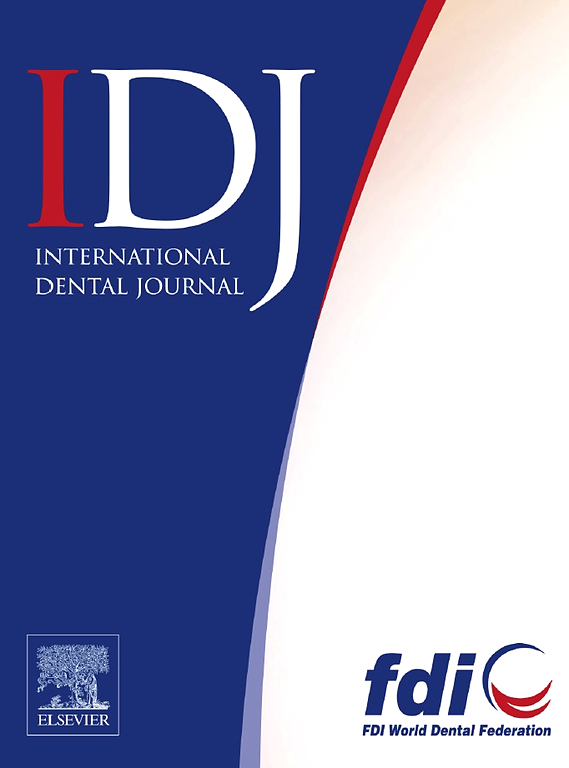CTSK as a Collagen Degradation Marker Induces Gingival Recession During High-Force Orthodontic Tooth Movement
IF 3.2
3区 医学
Q1 DENTISTRY, ORAL SURGERY & MEDICINE
引用次数: 0
Abstract
Introduction and aims
Gingival recession is a common complication of orthodontic treatment that affects both aesthetics and periodontal health. While traditionally associated with bone resorption, recent research suggests that Cathepsin K (CTSK) play a significant role in collagen fibre degradation within periodontal connective tissues. This study combines animal experiments and clinical research to investigate whether CTSK plays a role in the process of gingival recession during orthodontic tooth movement (OTM).
Methods
An OTM model was created using the maxillary first molar in mice. Differences in gingival tissue thickness and height between experimental and control groups were statistically analysed. Additionally, in the clinical study, CTSK expression in gingival crevicular fluid (GCF) was assessed. CTSK mRNA expression in gingival crevicular fluid was evaluated in orthodontic patients, comparing healthy and gingival recession groups.
Results
High-force OTM significantly decreased the thickness and height of mesial gingival tissues (P < .005). In the gingival recession group, the number of cells within the region of interest (ROI) decreased, while the number of CTSK+ cells increased significantly (P < .0005). RT-qPCR analysis showed that CTSK mRNA expression in GCF of gingival recession patients was significantly higher than in the control group (P < .05).
Conclusion
High-force orthodontic tooth movement induced gingival recession in mice. The results of the animal experiment suggested that CTSK contributes to collagen fibre degradation in gingival connective tissue, leading to recession. Studies of human GCF have further supported the role of CTSK as a marker of collagen degradation in gingival recession.
Clinical relevance
These findings may offer new insights for the clinical management of complications such as "black triangles" following orthodontic treatment.
CTSK作为一种胶原降解标志物在高强度正畸牙齿移动过程中诱导牙龈萎缩
简介与目的牙龈退缩是正畸治疗中常见的并发症,既影响美观又影响牙周健康。虽然传统上与骨吸收有关,但最近的研究表明,组织蛋白酶K (CTSK)在牙周结缔组织内的胶原纤维降解中起着重要作用。本研究将动物实验与临床研究相结合,探讨CTSK是否在正畸牙齿移动(OTM)过程中牙龈萎缩过程中发挥作用。方法以小鼠上颌第一磨牙为材料,建立OTM模型。对实验组与对照组牙龈组织厚度、高度的差异进行统计学分析。此外,在临床研究中,评估CTSK在龈沟液(GCF)中的表达。在正畸患者中比较健康组和牙龈萎缩组,评估龈沟液中CTSK mRNA的表达。结果强力外切术能显著降低牙龈中膜组织的厚度和高度(P <;.005)。在牙龈萎缩组,感兴趣区(ROI)内的细胞数量减少,而CTSK+细胞数量明显增加(P <;.0005)。RT-qPCR分析显示,牙龈萎缩患者GCF中CTSK mRNA表达量显著高于对照组(P <;. 05)。结论高强度正畸牙移动引起小鼠牙龈萎缩。动物实验结果表明,CTSK有助于牙龈结缔组织胶原纤维降解,导致衰退。对人类GCF的研究进一步支持了CTSK作为牙龈萎缩中胶原降解标志物的作用。这些发现可能为临床处理正畸治疗后出现的“黑三角”等并发症提供新的见解。
本文章由计算机程序翻译,如有差异,请以英文原文为准。
求助全文
约1分钟内获得全文
求助全文
来源期刊

International dental journal
医学-牙科与口腔外科
CiteScore
4.80
自引率
6.10%
发文量
159
审稿时长
63 days
期刊介绍:
The International Dental Journal features peer-reviewed, scientific articles relevant to international oral health issues, as well as practical, informative articles aimed at clinicians.
 求助内容:
求助内容: 应助结果提醒方式:
应助结果提醒方式:


